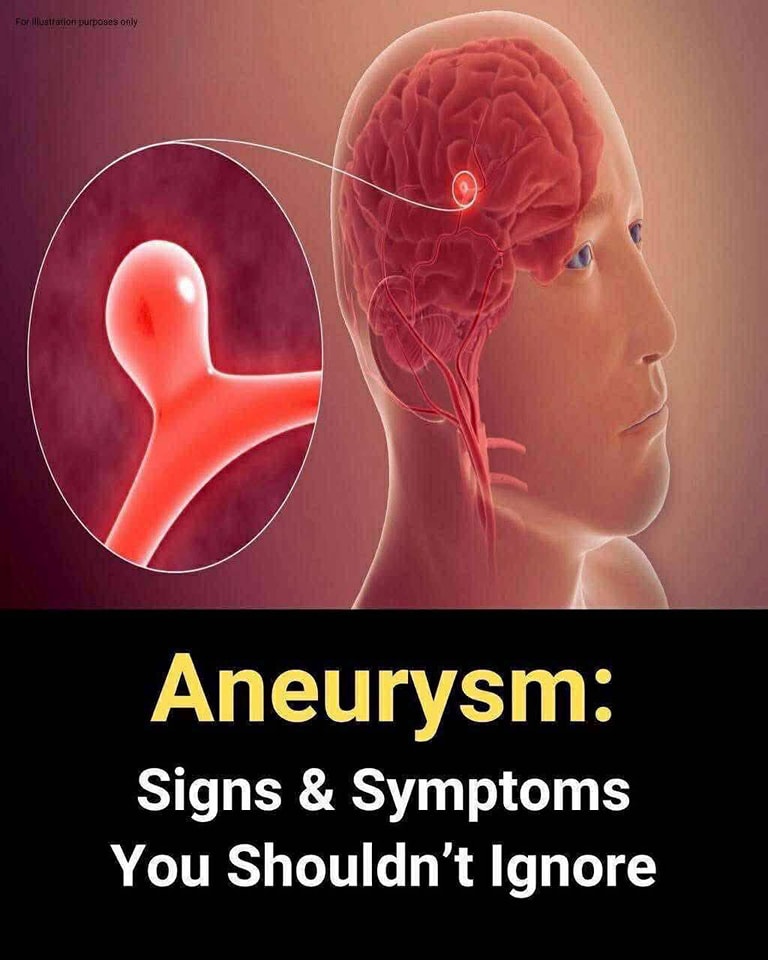ADVERTISEMENT
An aneurysm is an abnormal bulge or ballooning in the wall of a blood vessel. It can form in any blood vessel, but it’s most dangerous in major arteries like those in the brain (cerebral aneurysm), aorta (aortic aneurysm), or peripheral arteries in the limbs.
If the aneurysm ruptures, it causes internal bleeding, stroke, or death — but it often gives warning signs before reaching that point.
1. Brain Aneurysm (Cerebral Aneurysm)
What happens?
The artery wall weakens in the brain, forming a bubble-like bulge. This can put pressure on surrounding brain tissue or nerves — or rupture and cause a hemorrhagic stroke.
Before Rupture – Early Signs:
Sudden, severe headache (sometimes called a “thunderclap” headache)
Visual disturbances (blurred vision, double vision, loss of vision)
Pain behind or above one eye
Dilated pupil
Drooping eyelid (ptosis)
Weakness or numbness on one side of the face
Difficulty concentrating or confusion
Loss of balance or coordination
After Rupture – Emergency Signs:
Intense, sudden headache
Stiff neck
Nausea or vomiting
Seizures
Fainting or coma
Sensitivity to light (photophobia)
Sudden confusion or trouble speaking
Ruptured brain aneurysms are fatal in about 40% of cases. Early detection is critical.
see continuation on next page
ADVERTISEMENT
